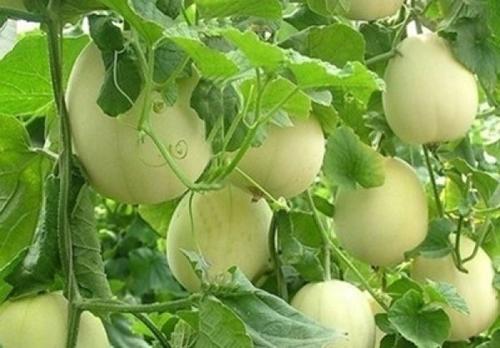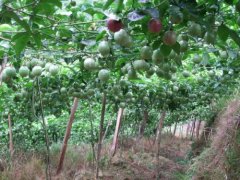Melon planting technology and management, what is the time and method of melon planting
Melon is a kind of vine melon fruit, then do you know how to plant this fruit, do you know when it is planted? How is it grown? Let's take a look, try planting by yourself, eating fruits and melons planted by yourself is a very happy thing!

Melon planting technology and management:
1. Soil: Melons like sandy, light and fertile, rich in manure and compost. The soil must be only slightly acidic: pH 6. Since vines are planted on hills, good yields can be achieved by putting decaying manure and fertilizers such as bone meal into each hill before planting. Foot-wide hills 5 to 6 feet apart. Process the soil to a depth of 12 "and work in some compost (preferably from cattle, horses or poultry). Use rakes to shape hills into 4-6 inch high, flat-topped mounds and wells. Melon peels are suitable for composting; they decompose quickly and are rich in phosphorus and potassium.
2, planting melon: germination is generally in 7-10 days. Melon seedlings are best planted from late March to early April. Start planting indoors 4 to 5 weeks before outdoor planting time. Because plants are sensitive to coolness, the soil must be warm, the weather warm, and quiet day and night. If the night is cool, use a hot hat to protect the plants. Melons can be sown directly outside, but some gardeners report germinating better with pre-planted seeds. Consider adding row covers outdoors, which can be removed a week after plants begin to grow. Row covers help raise temperatures, tame winds and keep out insects.
For direct seeding and transplanting, cover seedlings with hot caps to prevent frost, accelerate their growth, and prevent pests. Grape vines work best if planted on a hill. Rows and hills should be set 5 to 6 feet in one direction, with 2 or 3 plants per hill. Thinning of the two strongest plants in a week. Melons are planted widely, with ground-hugging vines and soft, attractive foliage. Flowers suddenly appear, and it's interesting to see melons start to develop after the petals fall.
4. To encourage lateral branches, pinch out the growing ends when the seedlings have 3 leaves. When the new lateral branches have 3 leaves, squeeze out the central growth area again. When the fruit begins to form, pinch the grapes back to the two leaves outside the fruit. Make sure fruits on the grid are supported by nets or pantyhose, and fruits on the ground vines are lifted by empty cans to prevent disease and promote ripening.
They also need enough water when they begin to develop. Gutters near plants can be flooded for efficient watering. For fertilizer, give each hill about 1/2 cup 5-10-5 of fertilizer, liquid fertilizer or fish emulsion 3 weeks after planting, and again after the flowers appear (if you can find the original hill). Keep the hills well watered until the fruit begins to fill. Since weeding and cultivation are problems for spreading grape crops, black plastic or thick mulch proves an excellent aid in keeping weeds, soil moisture and melons off the ground while they develop. Plastic mulch should be placed on the ground and fixed before planting, then center holes cut for the hills and have some extra slots for rainwater and hose water filtration.
- Prev

Blueberry planting techniques: how to grow and manage blueberries? The planting environment of blueberry
Blueberry, the current market price is relatively high, do you know how to grow blueberries? Do you want to know how to grow blueberries yourself? Let's take a look at how blueberries are planted and managed, and what is the environment in which they grow. Cultivation of blueberries
- Next

Introduction to the planting technology and management of passion fruit, how long does it take to plant passion fruit?
Do you like passion fruit? The nutritional value of this kind of fruit is very high. Many people like this fruit. Do you want to grow it yourself? Let's take a look at the introduction of passion fruit planting technology and management. 1. The planting management of a passion fruit
Related
- A course of planting techniques and methods on how to grow carrots
- How to plant the latest tulips?
- Is it better to pick tea in the morning or in the afternoon? When is the best time for tea to be picked? what is the third or fifth tea?
- Launch Yuanxiao Happy combination Haocha + Tea Yuan healthy Taste
- Penghu Tourism "Fireworks 20 Parade with You"
- 2022 West Lake Happiness holds "Digital Revitalization Voucher" and draws iphone13 and laptop.
- Banqiao Fuzhou social houses are designed to change start-up combined with police elimination to create a safe and livable environment
- The convenient measure of "mechanical weeding" in Xinbei has been abused and the Agriculture Bureau has imposed heavy penalties on the illegal land consolidation.
- Changgeng University Joins Hands with Four Memory Factories to Rescue Memory Talent Shortage
- The list of Taiwan's top 100 MVP managers is listed by the Director-General of the Farmers' Association of Sanxia District.

